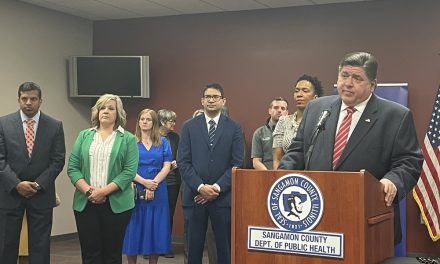
OSF looks to future with transformation of Streator facility

OSF HealthCare is transforming a former hospital in Streator into a technology-driven outpatient center that it says could be the future of rural healthcare.
It could also be a model for change, as lawmakers and state officials continue to debate how to reallocate more than $260 million in hospital assessment funding to hospitals ready to transform.
The hospital transformation committee is set to meet again Wednesday. Last week, legislators approved a measure pushing back the deadline for the Department of Healthcare and Family Services to file a final rule on the program to April.
OSF officials highlighted the Streator facility at a committee meeting this fall in Chicago. OSF is among several systems and hospitals that currently receive funding from the hospital assessment fund that officials are targeting for transformation. But OSF says the transformative work at Streator, and other facilities in its system, was taking place before the committee was formed.
“I don’t want to get ahead of whatever the committee decides to go forward with as far as what qualifies and what doesn’t, and what parameters they’re going to be looking at,” said Chris Manson, vice president of government relations for OSF. “I will say that OSF has and will continue to make the case that if there’s going to be money set aside specifically for the idea of transformation, that OSF has a proven track record before dollars were available specifically for that of moving in that direction and we’ve been doing it across our system.”
OSF took over the Streator facility in 2016 after Hospital Sisters Health System decided to close St. Mary’s Hospital. Unlike HSHS, OSF has other inpatient hospitals nearby: OSF Saint Elizabeth Medical Center in Ottawa and OSF Saint James in Pontiac.
That gave it more latitude try to new things.
“This is not the first, nor will it be the last rural community that is going to face similar challenges in healthcare today,” said Ken Beutke, president of the OSF Center for Health – Streator. “We saw it as an opportunity to start to redesign what we thought might be the direction of the future of healthcare for rural communities. And so we made the decision to work towards an innovative, rural healthcare model that we could test in this market and began to take a different look at the delivery of care.”
In 2016, OSF opened a freestanding emergency room in Streator. It also increased its focus on population health, forging partnerships with community groups to tackle issues like housing and transportation.
It assembled a coalition of area leaders to develop solutions for what the group decided were Streator’s most pressing needs: healthy eating, activity and the opioid epidemic.
In addition, OSF is increasing its use of technology. That includes the piloting of Pieces Iris, a cloud-based case management platform that allows OSF to connect patients with social service agencies.
OSF believes its investment in population health will pay off in the long run. But in the meantime, it’s helping foot the bill, according to Beutke.
“We still are incurring costs,” Manson added. “We are confident that at a point it will start to pay off and return a dividend. But it does take a while to get there.”
Beutke anticipates applying lessons learned in Streator to other parts of the system, just as OSF is deploying innovations from other markets in Streator.
“The overarching message is the recognition that we have to transform. We can’t continue to do healthcare the way we’ve always done it. And we can’t just throw more money at doing the same thing the way we’ve always done it,” he said. “And I think that’s what OSF HealthCare is demonstrating in many of our markets, is that we’re trying to do healthcare differently.”









